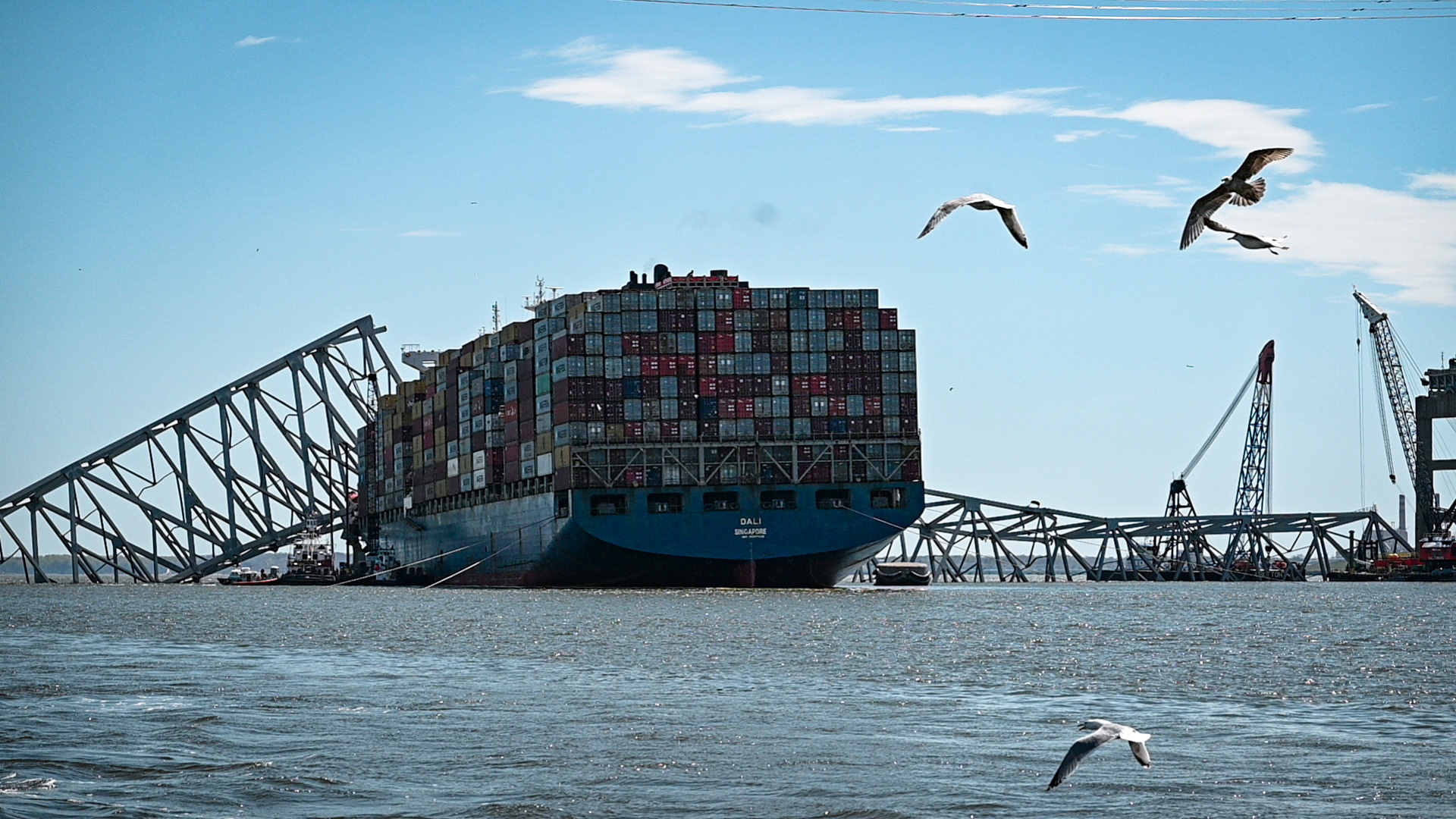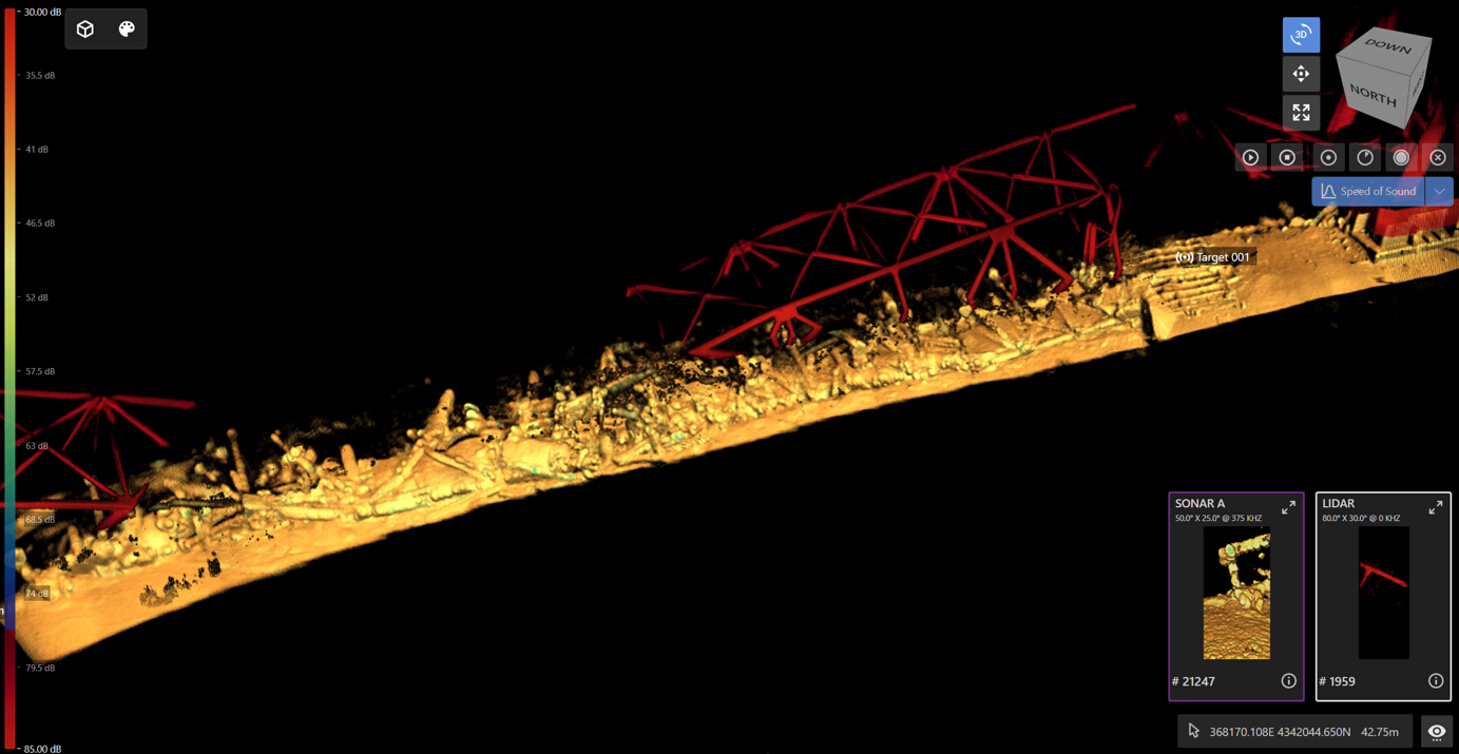
BALTIMORE, Md. – More than 40 divers are actively working under the surface of the Patapsco River every day to understand and start to remove the haystack of twisted metal on the riverbed after the collapse of the Francis Scott Key Bridge, U.S. Coast Guard commandant Adm. Linda Fagan said on Monday.
Above the waterline of the hull of MV Dali, the 940-foot container ship is snarled in the remnants of the bridge, stuck fast to the remaining supports.
“It’s a 940-foot container ship. There was a gas pipeline running underneath the bow of the ship that had to be turned off. There are power lines right over the stern of the ship as they begin to consider how to make the ship lighter so it can be refloated and removed. There’s just a host of complexities around the recovery,” Fagan said at the annual Sea Air Space 2024 symposium.
“It’s a very dive-intensive recovery there. At any given time, there are 40-plus divers in the water working to map and understand the debris field on the bottom of the bridge trusses. We do need to be mindful there are still three people missing and respectful recovery … remains very much an ongoing part of the work and effort.”
Pieces of the bridge have already been removed by Maryland’s contractors, Capt. Sal Suarez, supervisor of U.S. Navy Salvage and Diving, told USNI News on Monday during a visit to the site. The Navy team, which includes contracted divers and cranes, is working on the federal channel, Suarez said, while the state also has teams removing parts of the bridge. Removal of the ship also falls outside of the Navy’s purview.
The Navy is just one of the several assisting organizations to the unified command, which includes Coast Guard, the Army Corps of Engineers, the Maryland Department of the Environment, Maryland Transportation Authority, Maryland State Police and Witt O’Brien’s, a management company representing Dali’s managers Synergy Marine.
The Navy team arrived on March 26, the same day Dali struck the Francis Scott Key Bridge, causing to collapse into the Patapsco River. Pieces of the bridge are now settled into the mud under the water, while a section still remains on top of Dali.

Divers are working under the water to remove the wreckage in the mud, while other teams that fall under the unified command are working to remove crates from Dali, which will allow the ship to be refloated and moved.
Visibility is about one to two feet for the divers, Suarez said. When the team first got in the water, it discovered just how murky it was. High currents and the wreckage situation also made it complicated for the divers. The team contracted a Coda Octopus System to get a better understanding of the wreckage site. The sonar pictures gave a clearer picture of how much the bridge settled into the mud.
“The initial mapping is done,” Suarez said. “And that allowed us to really understand how bad it was down there.”
Mapping will continue as SUPSALV uses it to track its progress and make sure all the debris comes out of the water, he said.
Right now, contractors under the Navy have used some submarines to make small cuts to the wreckage of the bridge and complete some bucket dredging to allow divers to get into the mudline. SUPSALV is also setting up equipment for larger cutting operations.
The biggest obstacle so far has been the crappy weather that hit Maryland all of last week, Suarez said. While divers still go down in the rain, lightning can halt the project. Rain can also be a problem for some of the heavy equipment, making the weather a safety concern, he said.
The weather forecast for the current week suggests more sun and less rain, which will make it easier for the teams.





